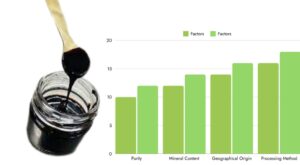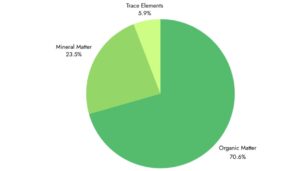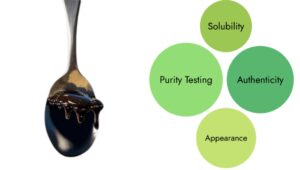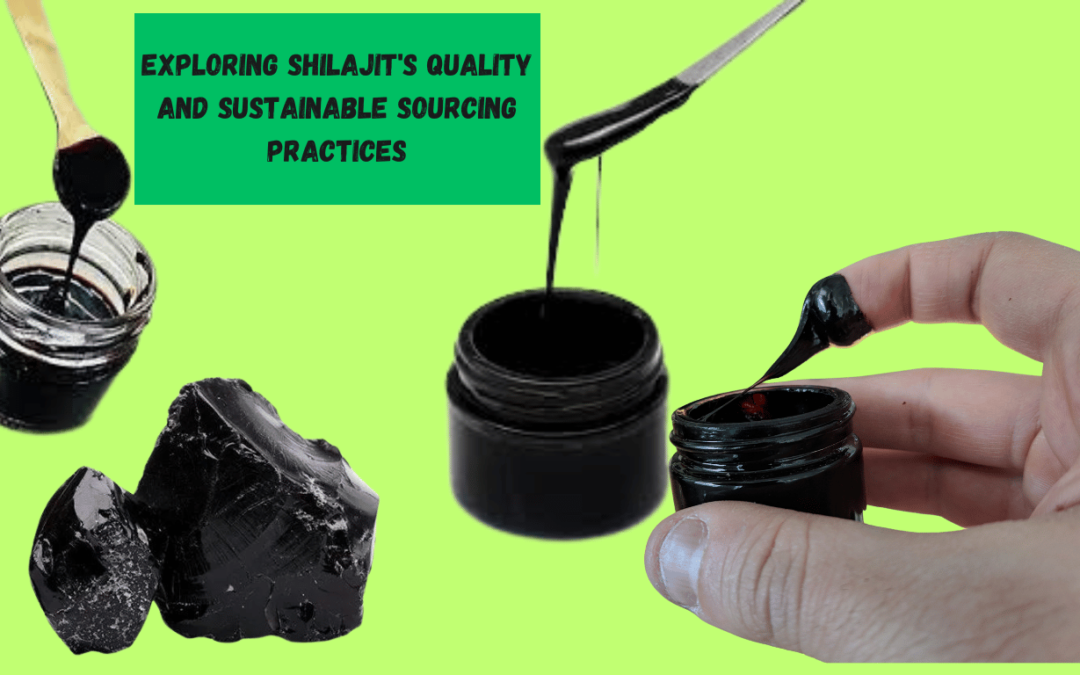Shilajit, often referred to as the “nectar of the gods” in Ayurvedic medicine, has gained popularity worldwide for its potential health benefits and unique composition.
However, ensuring the quality and sourcing of shilajit is crucial to harnessing its therapeutic properties safely and effectively. In this blog, we delve into the factors that determine the quality of shilajit and how sourcing practices can impact its purity and efficacy.
Understanding Shilajit Quality: What You Need to Know
Shilajit, a potent substance with a rich history in traditional medicine, offers numerous potential health benefits. However, ensuring its quality is essential to reap these benefits safely and effectively. In this blog post, we explore the key aspects that define shilajit quality and how you can identify high-quality products.
What is Shilajit?
Shilajit is a natural substance formed over centuries from the gradual decomposition of plant material and minerals in the cracks of rocks, primarily in high-altitude mountain ranges like the Himalayas. It is rich in bioactive compounds such as fulvic acid, humic acid, minerals, and trace elements, which contribute to its therapeutic properties.
Factors Affecting Shilajit Quality

Several factors influence the quality of shilajit:
Purity and Authenticity: Authentic shilajit should be free from contaminants such as heavy metals, pesticides, and microbial impurities. These contaminants can compromise its safety and efficacy. Look for products that have undergone rigorous testing for purity.
Mineral Content: Shilajit’s mineral content is crucial for its therapeutic effects. It typically contains minerals like iron, calcium, magnesium, zinc, copper, and potassium. The presence of these minerals in their bioavailable form enhances their absorption and utilization by the body.
Common Minerals in Shilajit
- Fulvic Acid: Although not a mineral itself, fulvic acid is a crucial component of shilajit that enhances mineral absorption and bioavailability. It facilitates the transport of minerals into cells, improving their utilization within the body.
- Iron: Iron is essential for the formation of hemoglobin in red blood cells, which carries oxygen throughout the body. Adequate iron intake supports energy production, immune function, and cognitive health.
- Calcium: Calcium is vital for bone health and muscle function. It helps maintain strong bones and teeth, supports nerve transmission, and plays a role in muscle contraction.
- Magnesium: Magnesium is involved in over 300 biochemical reactions in the body. It supports nerve and muscle function, regulates blood pressure, and contributes to energy metabolism.
- Zinc: Zinc is essential for immune function, wound healing, and cell division. It also supports metabolism, protein synthesis, and helps maintain healthy skin and vision.
- Copper: Copper plays a role in the production of red blood cells and connective tissues. It also acts as an antioxidant, helping to neutralize free radicals.
- Potassium: Potassium is an electrolyte that helps maintain fluid balance, nerve function, and muscle contractions. It supports cardiovascular health and regulates blood pressure.
- Trace Elements in Shilajit
- Selenium: An antioxidant that supports immune function and thyroid health.
- Strontium: Helps support bone health and may have anti-inflammatory properties.
- Rubidium: Plays a role in maintaining electrolyte balance and supporting nerve function.
- Barium: Supports nerve and muscle function.
- Lithium: Thought to support mood and mental health.
Bioactive Compounds: Key bioactive compounds in shilajit include fulvic acid and humic acid, which have antioxidant, anti-inflammatory, and detoxifying properties. The concentration of these compounds can vary depending on the source and processing methods.
Geographical Origin: Shilajit sourced from pristine, high-altitude regions tends to be of higher quality due to the purity of the environment and the unique geological conditions that contribute to its formation.
- Processing Methods: The methods used to extract and process shilajit can impact its quality. Traditional extraction methods involve careful harvesting and purification to retain its bioactive components. Modern processing techniques should aim to preserve the integrity and potency of shilajit.
Signs of High-Quality Shilajit

To identify high-quality shilajit products, consider the following indicators:
- Authenticity and Source: Choose products sourced from reputable suppliers who disclose the geographical origin of the shilajit. Look for certifications or quality seals that indicate adherence to good manufacturing practices (GMP) or organic standards.
- Purity Testing: Reliable manufacturers conduct thorough testing for heavy metals, microbial contaminants, and other impurities. Certificates of analysis (COA) should be available upon request, demonstrating compliance with safety and quality standards.
- Appearance and Consistency: Shilajit typically appears as a dark brown to black resinous substance. It may have a strong earthy odor and a bitter taste. The consistency should be thick and sticky when handled, indicating its natural resinous form.
- Solubility and Dissolution: Genuine shilajit dissolves easily in water or warm liquids, leaving behind a clear solution. It should not leave residue or sediment after dissolution, which could indicate impurities or additives.
Choosing High-Quality Shilajit Products

When selecting shilajit products, consider the following tips to ensure quality and efficacy:
Research and Reviews: Read customer reviews and seek recommendations from trusted sources to gauge the effectiveness and reliability of different brands.
Check Labels and Certifications: Look for products that are certified organic and meet international quality standards. Verify the presence of essential bioactive compounds such as fulvic acid and minerals.
Consult with Experts: If you’re unsure about which shilajit product to choose or how to incorporate it into your health regimen, consult with a healthcare professional or an Ayurvedic practitioner for personalized advice.
Sustainable Sourcing Practices for Shilajit

Shilajit, a revered substance in traditional medicine for its potential health benefits, originates from remote mountainous regions like the Himalayas. As global demand for shilajit grows, ensuring sustainable sourcing practices becomes imperative to protect natural ecosystems and maintain the integrity of this valuable resource.
Why Sustainable Sourcing Matters
Sustainable sourcing of shilajit involves harvesting practices that minimize environmental impact and promote long-term conservation. Here’s why it’s crucial:
- Preservation of Ecosystems: Shilajit is formed through the gradual decomposition of plant material and minerals over centuries. Unsustainable harvesting methods, such as over-harvesting or improper extraction techniques, can disrupt delicate ecosystems and endanger local flora and fauna.
- Maintaining Purity and Quality: Shilajit’s quality is influenced by its geological origin and the pristine environment in which it forms. Sustainable sourcing ensures that shilajit is harvested from clean, unpolluted areas, preserving its purity and therapeutic properties.
- Cultural Respect: Many communities in regions where shilajit is found have cultural and traditional ties to its harvesting. Sustainable practices respect indigenous knowledge and contribute to local livelihoods without exploiting natural resources.
Principles of Sustainable Sourcing
Effective sustainable sourcing of shilajit adheres to several key principles:
- Ethical Harvesting: Harvesters should follow ethical guidelines, respecting local regulations and cultural practices. This includes harvesting only mature shilajit resin and leaving sufficient time for natural regeneration.
- Wildcrafting: Wildcrafting involves harvesting shilajit from its natural habitat without causing harm to surrounding plants and ecosystems. It prioritizes minimal disturbance and sustainable use of natural resources.
- Traceability and Transparency: Manufacturers and suppliers should provide transparency about the sourcing location, extraction methods, and sustainability practices. Consumers should be able to trace the journey of their shilajit products from source to market.
- Conservation Efforts: Sustainable sourcing initiatives may include habitat restoration, biodiversity conservation, and community engagement programs. These efforts ensure that shilajit harvesting benefits local communities while safeguarding natural habitats.
How Consumers Can Support Sustainability
As consumers, you can contribute to sustainable sourcing practices by:
- Choosing Certified Products: Look for shilajit products certified by recognized organizations for organic practices or sustainability standards. Certifications like FairWild or USDA Organic indicate compliance with rigorous sustainability criteria.
- Educating Yourself: Learn about the environmental and social impacts of shilajit harvesting. Support brands that prioritize sustainability and transparency in their sourcing practices.
- Advocating for Responsible Practices: Encourage brands to adopt sustainable and ethical sourcing policies. Your voice as a consumer can influence industry practices towards greater sustainability.
Conclusion
Quality and sourcing are paramount when it comes to shilajit, a natural substance with profound health potential. By understanding the factors that influence its quality and opting for products sourced sustainably and processed with care, you can maximize the benefits of shilajit while ensuring your health and environmental responsibility. Embrace the ancient wisdom of shilajit responsibly and experience its transformative effects on your well-being.
Whether you’re seeking vitality, cognitive enhancement, or immune support, shilajit holds promise as a natural supplement rooted in centuries of tradition and backed by modern scientific inquiry. Choose wisely, and let shilajit be your ally in the journey towards holistic health and vitality.

